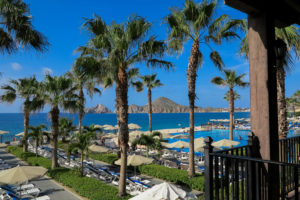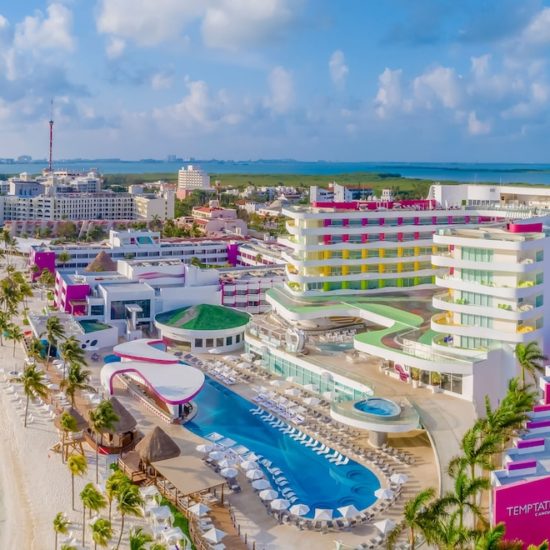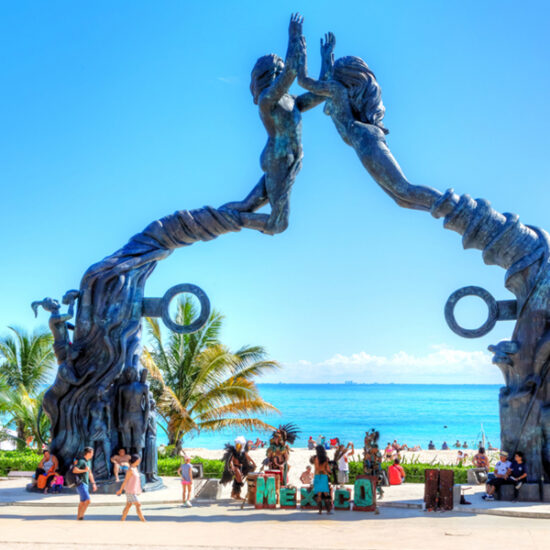
All You Need to Know About the Upcoming Hurricane Season in Los Cabos
Los Cabos is a renowned tourist destination located at the southern tip of Mexico’s Baja California Peninsula. It comprises the towns of Cabo San Lucas and San Jose del Cabo, connected by a 20-mile corridor lined with world-class resorts, beaches, and golf courses.
This region attracts visitors worldwide, drawn to its stunning natural beauty, vibrant nightlife, and abundant outdoor activities like sportfishing, scuba diving, and whale watching.
For travelers planning a trip to Los Cabos, it is crucial to understand the region’s hurricane season, which typically runs from May to November, with peak activity from August to October. This article will provide everything you need to know about the place and precautions during hurricane season.
When is hurricane season in Los Cabos?
The hurricane season in Los Cabos typically runs from mid-May to late November each year. However, the peak period of hurricane activity in this region is from August through October.
Historically, the Baja California Peninsula, including Los Cabos, has been impacted by several significant hurricanes and tropical storms over the years:
- Only two storms in recorded history. Hurricane Olivia in 1967 and Hurricane Kiko in 1989 – made landfall in Los Cabos by entering from the Sea of Cortez side and exiting through the Pacific Ocean.
- Hurricane Juliette in 2001 was one of the wettest storms on record, dropping over 39 inches (1,010 mm) of rain in the town of Caduaño, the highest rainfall total ever recorded from a tropical cyclone in Baja California Sur.
- Hurricane Odile in 2014 was the most intense hurricane to land on the Baja California Peninsula in the satellite era, causing widespread damage estimated at around U$1.22 billion.
The information presented here isn’t intended to cause fear but rather to give you a proper context on when hurricanes happen and the aftermath.

Recent Trends
In recent years, Los Cabos has experienced several notable hurricane impacts:
- Hurricane Lidia in 2017 brought heavy rains and flooding to the region.
- Hurricane Lorena landed as a Category 1 hurricane in southern Baja California in September 2019.
- Hurricane Olaf in September 2021 resulted in heavy rainfall and severe winds impacting Los Cabos.
- Hurricane Kay in September 2022, while weakening to a tropical storm before landfall, still brought significant rainfall and gusty winds to the area.
? While direct hurricane strikes are relatively infrequent, the risk of tropical storms, heavy rainfall, and associated flooding remains a concern during the hurricane season in Los Cabos.
Travelers should stay informed about weather conditions and follow guidance from local authorities.
What travelers need to know: Navigating Los Cabos’ hurricane season
As a traveler planning a trip to the sun-drenched paradise of Los Cabos, it’s essential to be aware of the region’s hurricane season and the potential weather patterns and risks associated with it.
While the allure of pristine beaches and vibrant nightlife is undeniable, being prepared can ensure a worry-free vacation experience.
Typical weather conditions during hurricane season
Los Cabos experiences hurricane season from May to November, with peak activity typically occurring between August and October.
During this period, the region can experience heavy rainfall, high winds, and the potential formation of hurricanes or tropical storms.
While these conditions may seem daunting, it’s important to remember that stormy weather does not occur daily, and many days still offer the idyllic Cabo weather that draws visitors from around the world.
Specific hazards associated with hurricanes
When a hurricane or tropical storm does make its way to Los Cabos, it can bring a range of hazards that travelers should be aware of. Storm surges, which are abnormally high sea levels caused by the storm’s winds, can lead to coastal flooding and erosion.
Heavy rainfall can result in inland flooding, particularly in low-lying areas, while high winds can cause property damage and disrupt travel plans.
Additionally, hurricanes can generate rip currents, which are powerful channels of water that can sweep even the strongest swimmers out to sea. In some cases, these storms can also spawn tornadoes, adding another layer of risk to an already precarious situation.
While these hazards may sound alarming, it’s important to remember that Los Cabos is well-prepared for such events.
?Hotels and resorts in the region have emergency plans, and local authorities work closely with emergency services to ensure the safety of visitors and residents alike.
What are the safety measures and preparedness for hurricane season in Los Cabos?
Packing the right items can make a significant difference in your comfort and safety when planning a trip to Los Cabos during hurricane season. Here are some essentials to consider:
- Waterproof clothing. Bring rain jackets, ponchos, and waterproof footwear to stay dry during heavy rains.
- Sturdy shoes. Opt for durable, non-slip shoes to navigate wet and potentially slippery surfaces safely.
- Extra supplies. Pack a flashlight, extra batteries, a first aid kit, non-perishable food, bottled water, and any necessary medications. These items can be crucial if you must stay indoors for an extended period due to a storm.
Researching weather conditions and staying updated
Before you embark on your journey, it’s essential to stay informed about the weather conditions in Los Cabos:
- Check weather forecasts. Regularly monitor weather updates from reliable sources such as the National Hurricane Center, The Weather Channel, and local weather apps.
- Stay updated on advisories. Follow local news and weather advisories to stay informed about any potential storms or hurricanes. Many hotels and resorts also provide updates and guidance to their guests.
Emergency preparedness plans by local authorities and hotels
Los Cabos is well-prepared for hurricane season, with robust emergency plans in place:
- Local authorities. The local government works closely with emergency services to ensure the safety of residents and visitors. They provide timely updates and instructions through various channels, including social media and local news.
- Hotels and resorts. Most accommodations in Los Cabos have comprehensive emergency protocols. These include designated safe areas, backup power supplies, and staff trained to assist guests during emergencies. Don’t hesitate to ask your hotel about its specific hurricane preparedness plans when you check-in.
Resources available for travelers
Several resources can help you stay informed and safe during your stay:
- Emergency hotlines. Keep a list of important emergency contacts, such as the local tourist assistance hotline (078) and emergency services (911).
- Mobile apps. Download weather and emergency apps like the National Hurricane Center app and AccuWeather, and local apps like the Los Cabos Weather app. These can provide real-time updates and alerts.
- Local tour operators. Many tour operators and transportation providers are equipped to handle emergencies and can offer additional support and guidance during a storm.
What to do during a hurricane?
In the event of a hurricane, knowing the evacuation routes and having emergency contacts on hand is crucial.
- Evacuation routes. Familiarize yourself with the nearest evacuation routes from your accommodation. Hotels often provide maps and instructions for safe evacuation.
- Emergency contacts. Keep a list of emergency contacts, including local authorities, your hotel, and the U.S. Consulate in San Jose del Cabo ((624) 143-3566).
Safe shelter locations within accommodations
If evacuation is not possible, knowing where to find safe shelter within your accommodation is essential:
- Designated safe areas. Most hotels have designated safe areas, such as interior rooms, away from windows and doors. These areas are typically reinforced to withstand strong winds and heavy rain.
- Hotel staff guidance. Follow the instructions provided by hotel staff, who are trained to manage emergencies and ensure guest safety.
?By taking these precautions and staying informed, you can ensure a safer and more enjoyable trip to Los Cabos, even during hurricane season.
Plan your trip with Holibay and get up to 80% off on hotel deals
Los Cabos remains a top destination, loved for its stunning beaches, lively nightlife, and adventurous activities. Understanding the nuances of hurricane season, from May to November, with a peak between August and October, ensures a safe and pleasant trip.
Weather during this period can bring heavy rains, strong winds, and potential hurricanes. Knowing the risks—such as storm surges, flooding, and rip currents—and preparing appropriately by packing waterproof gear and staying informed can mitigate potential disruptions.
Local authorities and hotels have robust emergency plans, and resources like hotlines and mobile apps are available to keep you safe. By taking these precautions, you can fully enjoy your stay in this beautiful region.
As you plan your visit, consider booking with Holibay for unbeatable hotel discounts—up to 80% off. You truly deserve the break you’ve been longing for, and there’s no better place than Los Cabos to relax and recharge.




